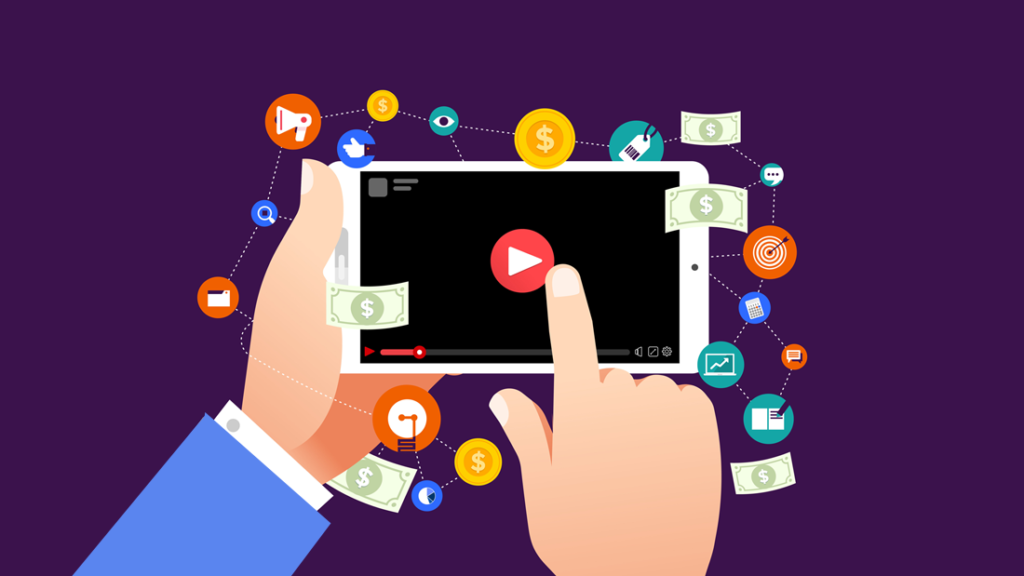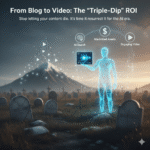In today’s digital landscape, video has emerged as a dominant form of content across social media platforms. From short clips to longer narratives, videos have the power to captivate and engage audiences like no other medium. As a result, businesses and marketers are increasingly recognizing the importance of incorporating video marketing strategies into their overall digital marketing efforts. In this blog, we’ll explore the rise of video content, its impact on social media, and the key reasons why video marketing has become a crucial tool for businesses to connect with their target audiences.
- The Rise of Video Content:
Over the past decade, the consumption of video content has skyrocketed, thanks to advancements in technology and the widespread availability of high-speed internet connections. Platforms like YouTube, Facebook, Instagram, and TikTok have transformed into video-centric platforms, attracting billions of users worldwide. Short-form videos, live streams, stories, and even long-form content have become the norm, allowing users to consume information and entertainment in a visually engaging format.
- Captivating and Engaging Audiences:
One of the primary reasons behind the popularity of video content is its ability to captivate and engage audiences effectively. Videos offer a multi-sensory experience by combining visuals, audio, and sometimes text or subtitles. This dynamic combination stimulates viewers’ emotions, making it easier for businesses to convey their brand message, evoke empathy, and establish a connection with their target audience. Whether it’s a product demonstration, a customer testimonial, or a behind-the-scenes look, videos have the power to tell compelling stories and leave a lasting impact.
- Higher Reach and Engagement:
Social media platforms have prioritized video content in their algorithms, giving it higher visibility and organic reach compared to other types of posts. Videos tend to receive more likes, comments, and shares, leading to increased engagement and potential virality. Moreover, with the rise of live video streaming, businesses can interact with their audience in real-time, fostering a sense of authenticity and immediacy. The ability to respond to comments and questions in real-time creates a unique opportunity for brands to build trust and strengthen relationships with their customers.
- Improved Conversion Rates:
Video marketing has proven to be highly effective in driving conversions. Studies have shown that including a video on a landing page can increase conversion rates by up to 80%. Videos can demonstrate products or services in action, provide tutorials, showcase testimonials, or highlight unique selling points. The visual and auditory experience of a video creates a strong emotional connection, which can influence purchasing decisions and drive more qualified leads.
- Enhancing Brand Awareness and Recall:
Well-crafted and memorable videos have the potential to enhance brand awareness and recall. A visually appealing video with a compelling narrative can leave a lasting impression on viewers, making them more likely to remember the brand and its message. By consistently delivering high-quality video content that aligns with the brand’s values and resonates with the target audience, businesses can establish a strong brand identity and create a positive brand perception.
- Mobile-friendly and Shareable:
With the increasing use of smartphones, video content is easily accessible on mobile devices, allowing businesses to reach a wider audience. Mobile-friendly videos that are optimized for various screen sizes and bandwidths ensure a seamless viewing experience for users on the go. Additionally, videos are highly shareable, making it easier for viewers to spread the word about a brand or a campaign, thereby amplifying its reach and potential impact.
Conclusion:
Video marketing has revolutionized the way businesses connect with their target audiences. By leveraging the power of video content, brands can engage, captivate, and emotionally connect with viewers, leading to increased brand awareness, higher engagement, and improved conversions. As the demand for visual content continues to grow,






